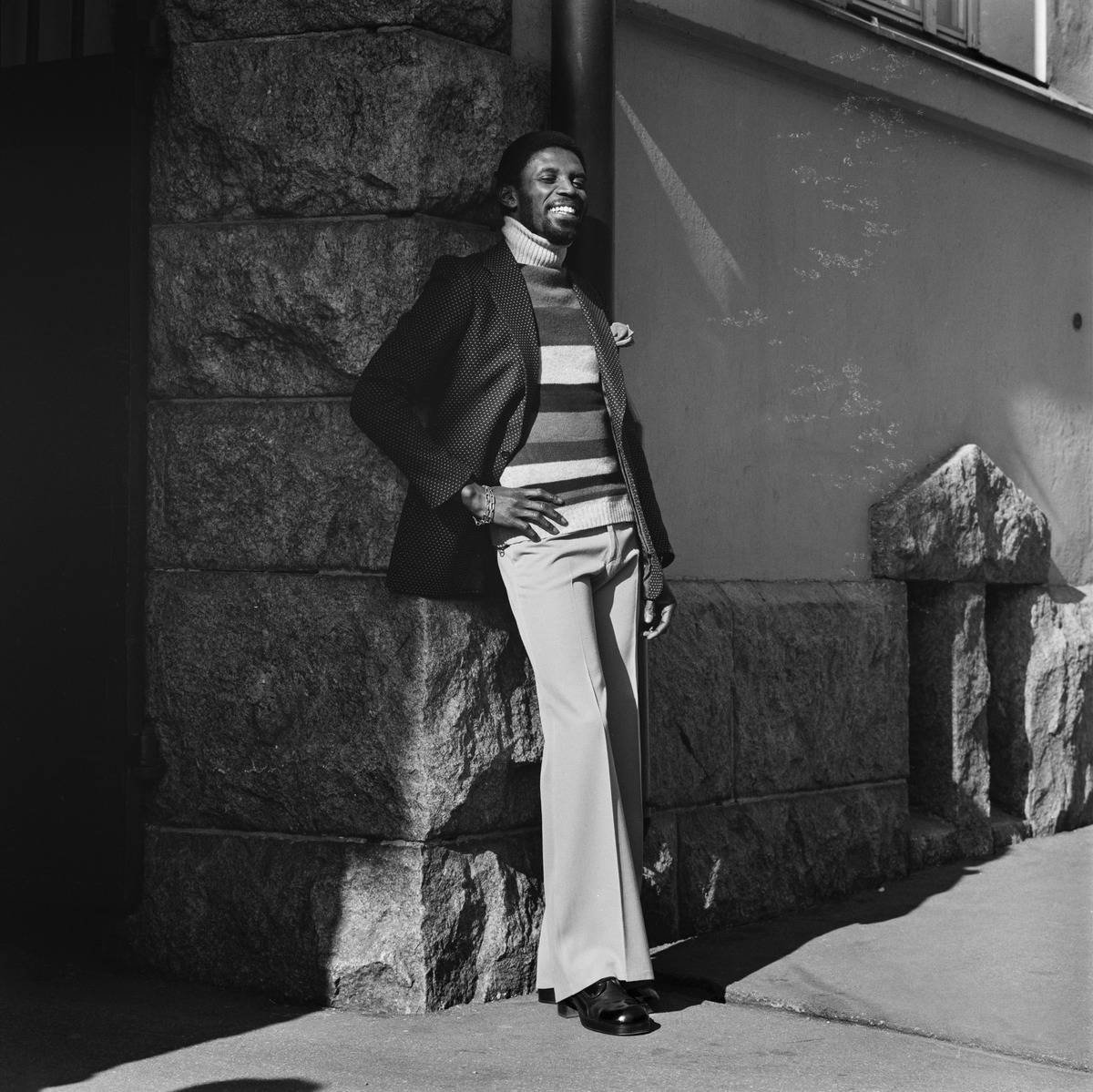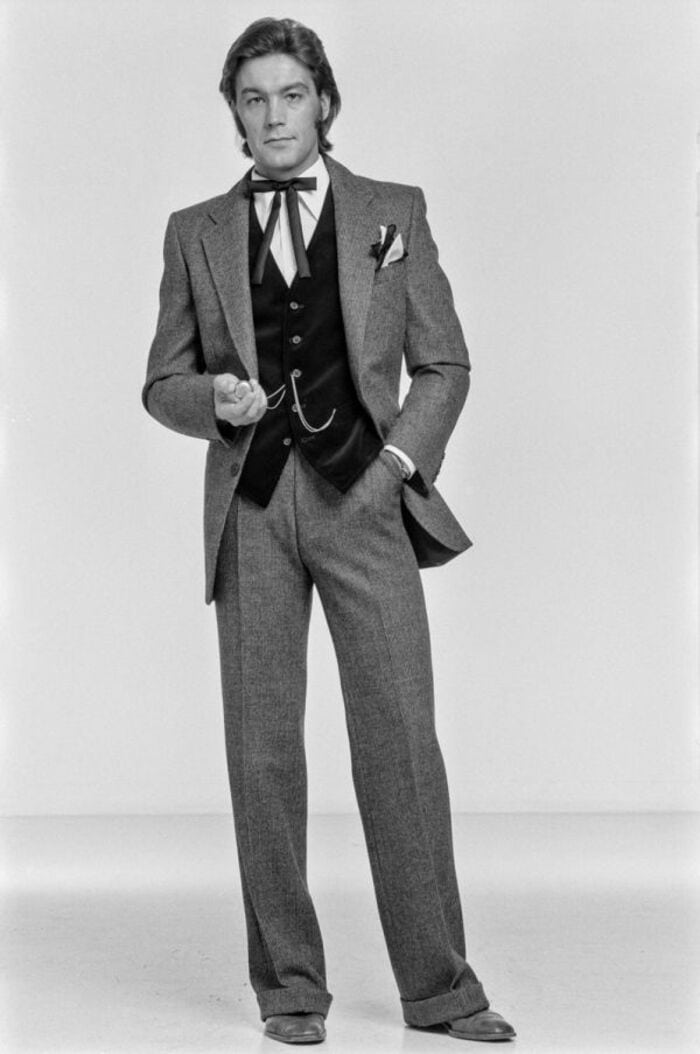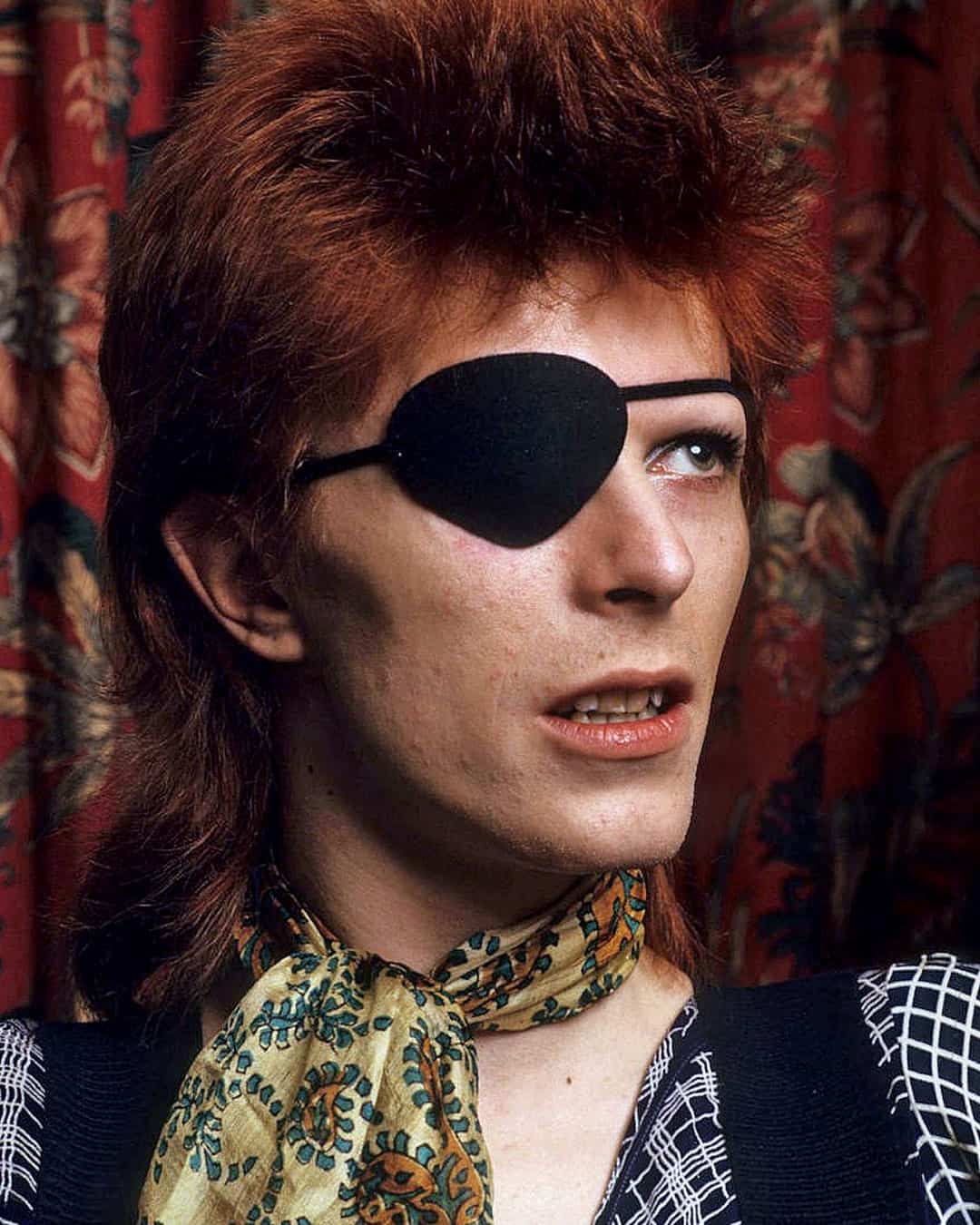In the kaleidoscopic world of style, 1970s men’s fashion stands out for its bold experimentation with colors, patterns, textures, and silhouettes. This era saw men’s attire continue the individualistic experiment from 60s fashion, embracing everything from the laid-back, earthy vibes of hippie culture to the glitzy, energetic essence of disco and glam rock.
’70s men’s fashion was a testament to the era’s ethos of freedom and individuality, reflecting the social and cultural shifts that defined the decade. As we delve into the nuances of this iconic period, we’ll uncover the eclectic mix of trends that ranged from bell-bottom jeans and polyester leisure suits to platform shoes and beyond.
This exploration will not only highlight the distinctive styles that characterized ’70s men’s fashion but also offer insights into how these trends have continued to influence contemporary wardrobes, proving the enduring legacy of this dynamic decade in men’s fashion today.
Key Takeaways
The 1970s marked a revolutionary period in men’s fashion, characterized by bold colors, extravagant patterns, and a continued move toward leisure and comfort. This era saw the mainstream acceptance of individualism and the blurring of formal and casual wear boundaries.
Key takeaways include the dominance of polyester fabric, the popularity of platforms and boots, and the introduction of iconic styles such as leisure suits and bell-bottom pants.
The 1970s fashion scene was also heavily influenced by music, cinema, and socio-political movements, making it one of the most eclectic and experimental periods in men’s fashion history.

1970s Men’s Fashion: A Brief Background
The 1970s was a decade of bold style, vibrant colors, and a significant shift towards casual living. It broke sharply with the more formal fashion trends of the preceding decades and was influenced by a variety of social movements, including the continued fight for civil rights, the feminist movement, and growing environmental awareness. The era was marked by an increased interest in personal expression through clothing, leading to a wide variety of trends and styles.
The early 1970s were characterized by a continuation of the late 1960s hippie style. However, by the mid-70s, fashion had taken a turn towards more tailored garments, with the introduction of the leisure suit becoming a symbol of the time. Polyester became the material of choice due to its durability and ease of care, dominating the fashion landscape.
Music and cinema played pivotal roles in shaping men’s fashion. Rock and disco influenced both casual and formal wear, with artists like David Bowie and movies such as �Saturday Night Fever†setting style benchmarks that were emulated by the masses. The punk movement also emerged during the latter part of the decade, challenging the mainstream with its edgy and rebellious styles.
Our Favorite 1970s Men’s Fashion Staples
Men’s Fashion in the 1970s: Style Essentials

Suits
In the 1970s, men’s suits evolved into more relaxed and colorful garments. Gone were the skinny lapels of the late 1950s and 1960s; 1970s fashion was all about wide cuts and looser-fitting suits.
The leisure suit, made popular by its polyester fabric and available in a range of bright colors, became a staple. These suits often featured wide lapels and bell-bottom trousers and were frequently worn without a tie.
The traditional business suit also saw changes, with patterns such as plaids and wide pinstripes becoming popular. Suits became a canvas for personal expression, moving away from the more conservative styles of the early 60s.

Shirts
Shirts for men in the 1970s embraced bold patterns, colors, and innovative designs. The era was known for its wide, unbuttoned collars, which were often flaunted over the jacket lapel. Satin shirts, velvet accents, ruffled fronts, and prints ranging from psychedelic to floral became the norm.
The polo shirt also remained popular as a casual option, reflecting the decade’s shift towards leisure and comfort. Layering was a common trend, with t-shirts under open shirts capturing the casual, laid-back attitude of the time.

Pants
Bell-bottoms are perhaps the most iconic men’s pants styles of the 1970s, characterized by a tight fit at the hips and a dramatic flare from the knee down. This style, along with the slightly more subdued boot-cut pants, dominated the decade.
Denim became increasingly popular as everyday wear, reflecting the casualization of men’s fashion. For formal wear, trousers remained flared but were seen in a variety of materials, including polyester, corduroy, and tweed, often with bold patterns or colors.

Sweaters & Knitwear
1970s men’s fashion introduced a playful and experimental approach to sweaters and knitwear. Sweaters were often brightly colored, featuring bold patterns such as geometric shapes, stripes, and abstract prints that reflected the decade’s love for eye-catching designs.
The turtleneck sweater continued as a fashion staple, serving both as a standalone piece and as a layering item under leisure suits or blazers. It symbolized the blend of sophistication and casual comfort that defined the era.
Cable knit sweaters and cardigans also gained popularity, offering a more relaxed and comfortable option that could easily transition from office to leisure activities.

Jackets & Outerwear
Jackets and outerwear in the 1970s ranged from functional to flamboyant, with a notable emphasis on personal style.
The large lapel suede jacket became a favorite of men’s casual wear in the 1970s. It is available in various materials, from leather to corduroy. The denim jacket and the denim sherpa jacket also continued as a causal staple for many men.
Meanwhile, the blazer was reinvented in velvet, corduroy, and other rich textures, often adorned with wide lapels and deep pockets, suitable for both formal and casual settings. The leather jacket, particularly in styles that echoed the punk rock movement, also became a symbol of rebellious youth culture.

Footwear
Men’s shoes in the 1970s were as varied and expressive as the clothing. Platform shoes and boots, for both men and women, became icons of the decade, offering height and a bold statement under flared trousers.
The disco era elevated the popularity of shiny, patent leather shoes, which were essential for any night at the club. Casual footwear saw the rise of sneakers as a fashion item, driven by the emerging jogging craze and a general move towards more casual, comfortable styles.
Sandals and clogs also became popular in casual settings, reflecting the decade’s laid-back, earthy vibe.

Men’s Formalwear in the 1970s
1970s formal fashion for men was a blend of traditional elegance with modern, often daring interpretations.
The tuxedo maintained its place for black-tie events but saw variations in color, with darker hues giving way to creams, whites, and even pastels for the more adventurous. Ruffled shirts became a staple beneath tuxedo jackets, adding a touch of flamboyance to formal attire. The cummerbund and bow tie remained essential components, though often in brighter colors or patterns than seen in previous decades.
The era’s formalwear was not immune to the casualization trend; the lines between formal and semi-formal began to blur. Three-piece suits, while still popular, were often worn in non-traditional fabrics and colors, reflecting the personal style and individuality that the 70s prized.
Velvet jackets and silk scarves also made their way into formal occasions, offering a soft, luxurious feel that broke from the more rigid formal attire of the past. This period also saw the introduction of more relaxed formalwear options, such as the leisure suit for less formal events, which could be paired with a wide-collared shirt for a look that was both stylish and comfortable.

Men’s Casualwear in the 1970s
Casualwear in the 1970s was characterized by unprecedented freedom of expression, with comfort and individual style at the forefront.
The decade saw the rise of denim as a fashion staple, not just for pants but also for jackets, vests, and even shirts. The introduction of the designer jean, featuring brands like Gloria Vanderbilt and Calvin Klein, elevated denim to a fashion statement, combining comfort with style.
T-shirts became more than just undergarments, emerging as canvases for expression through graphic prints and slogans, reflecting the era’s political movements, musical interests, and cultural icons.
The tracksuit, too, transitioned from athletic wear to everyday attire, influenced by the growing fitness trend and the popularity of sports personalities as fashion icons.
Layering was key in 70s casualwear, with combinations like t-shirts under open shirts or sweaters, paired with flared jeans or corduroy pants, creating looks that were both practical and stylish.
The introduction of synthetic fabrics, such as polyester and nylon, allowed for a wider range of lightweight, easy-care casual clothing, from windbreakers to synthetic knit tops, reflecting the decade’s innovative approach to casual dressing.

Men’s Accessories in the 1970s
Hats
1970s men’s fashion saw a continued decline in the everyday wearing of hats as a necessity, which had been the norm in previous decades. However, hats didn’t disappear from the fashion landscape.
Wide-brimmed hats, fedoras, and beanies were popular among those looking to add a bohemian or rock-inspired edge to their outfits. The influence of music and cinema was evident, with musicians and actors often sporting distinctive hats that became part of their signature looks.
Hats in the ’70s were more about making a statement or serving a specific style rather than fulfilling the traditional roles of status and uniformity.
Watches
Watches in the 1970s were not just timekeeping devices but also fashion statements. The decade witnessed the advent of digital watches, which became a symbol of the technological advancements of the time. Brands like Casio and Seiko were at the forefront of this revolution.
Analog watches with leather bands or metal bracelets remained popular for more formal occasions, and luxury brands like Rolex and Omega were coveted items. Watch designs ranged from sleek and minimalist to bold and colorful, reflecting the era’s diverse fashion sense.
Ties
Ties in the 1970s reflected the broader trends of the era, with wider widths and a variety of patterns and materials. Polyester ties with loud prints, including geometric shapes, paisley, and abstract patterns, were popular.
Suspenders and Belts
Suspenders saw a resurgence in the 1970s as part of the retro trend that looked back to the 1930s and 1940s for inspiration. They were often worn with high-waisted pants and suits for both a practical purpose and a fashion statement.
Belts, on the other hand, were wide with large, conspicuous buckles, reflecting the era’s penchant for bold accessories. Leather belts, often with embossed designs or in bright colors, completed the look of bell-bottom jeans and leisure suits.
Glasses
Eyewear in the 1970s ranged from functional to flamboyant. Oversized frames, often in unusual shapes and vibrant colors, mirrored the decade’s experimental fashion vibe. The use of eyewear as a fashion statement was evident, with clear and tinted lenses being worn regardless of the wearer’s need for prescription glasses.
More Popular Accessories for Men in the 1970s
Beyond the basics, the 1970s men’s fashion scene embraced a variety of other accessories that underscored the era’s diversity and penchant for personal expression.
Men confidently wore necklaces, bracelets, and rings, often featuring natural materials like leather, wood, and stones. This reflected the decade’s interest in organic and ethnic-inspired looks.
Bandanas and scarves were also popular, worn around the neck or head for a touch of flair. The era’s accessories underscored the overarching theme of 1970s men’s fashion: a celebration of individuality and the breaking down of traditional fashion norms.

Men’s Grooming Trends in the 1970s
1970s Men’s Hairstyles
In the 1970s, the long hair trend continued from the late 1960s, symbolizing a break from traditional norms and alignment with the era’s counter-culture movements. Men wore their hair longer, often shoulder-length or even beyond, with waves or curls embraced rather than smoothed out.
Middle-parted hair was also a hallmark of 1970s mens hairstyles, suited to the longer trends of the time and often seen with slight waves or straight hair, adding to the laid-back vibe of the era.
The shag haircut, characterized by its layered cutting technique, offered a low-maintenance, tousled look that was popular among both men and women. This 1970s hairstyle was made famous by celebrities like Rod Stewart and David Cassidy, whose hair became their signature.
For those in the professional realm, shorter haircuts still prevailed but with a modern twist. Styles were softer and more textured compared to the slicked-back looks of the ’50s and ’60s. Sideburns were a critical element of men’s hairstyles, growing in length and width, and often accompanied even the more conservative haircuts, providing a connection to the era’s more radical styles.
1970s Facial Hair
Facial hair in the 1970s was more than just a trend; it was an expression of the era’s push towards naturalism and the breaking down of previous decades’ grooming norms.
The full beard became a popular choice for men, reflecting a rugged, masculine aesthetic that was at once a throwback to earlier times and a statement of contemporary casual style. These beards were often worn thick and bushy, a stark contrast to the more manicured styles of later decades.
The mustache, however, truly defined the 1970s facial hair trends. It ranged from the thick, walrus style to the more sculpted handlebar mustache, which curled upwards at the ends. Influential figures in entertainment and sports frequently sported mustaches, contributing to their popularity. Figures like Burt Reynolds and Freddie Mercury made the mustache a key part of their iconic looks.
Experimentation wasn’t just limited to the style of facial hair but also in how it was combined with hairstyles. The contrast between clean-shaven faces with long hair or beards with short hair exemplified the era’s eclectic approach to grooming.
Sideburns, for example, sometimes extended into mutton chops that framed the face. This style complemented both the long and short hairstyles of the era, adding to the overall look of relaxed grooming standards.
The 1970s also saw the beginnings of the beard grooming industry, with products designed specifically for facial hair care. This development was in response to the growing trend of men wanting to maintain a more polished beard and mustache look, despite the overall preference for naturalism.

Big Names in 1970s Men’s Fashion
The 1970s was an era distinguished not just by its unique fashion trends but also by its icons, whose personal style helped define the decade’s aesthetic. Here are four key men’s fashion icons from the 1970s and their signature styles:
David Bowie
Bowie was not just a musical genius but also a fashion chameleon. Throughout the 1970s, his alter egos, from Ziggy Stardust with his glittery, futuristic outfits to the Thin White Duke’s more subdued but equally stylish suits, Bowie’s fashion was as versatile as his music. His use of makeup, androgynous clothing, and bold prints challenged traditional norms and left a lasting impact on men’s fashion.
John Travolta
As Tony Manero in �Saturday Night Fever,†Travolta brought the disco look into the mainstream. His iconic white three-piece suit, black shirt, and platform shoes became emblematic of the disco era. Off-screen, Travolta’s personal style was equally trendsetting, often featuring tailored suits, leisure suits, and a casual yet sophisticated approach to 1970s fashion.
Mick Jagger
The Rolling Stones frontman was known for his flamboyant stage presence and equally flamboyant wardrobe. Jagger embraced the glam rock trend with sequined jumpsuits, tight-fitting ensembles, and bold accessories. His love for eclectic prints and vibrant colors, along with his fearless approach to fashion, made him a style icon of the decade.
Elton John
Known for his extravagant costumes and oversized glasses, Elton John’s style was as bold and colorful as his music. His stage outfits, often adorned with feathers, sequins, and rhinestones, pushed the boundaries of men’s fashion. Off-stage, his day-to-day looks were equally trendsetting, featuring an array of patterned suits, flamboyant shirts, and, of course, his signature eyewear, setting him apart as a true fashion icon of the 1970s.
How to Wear 1970s Men’s Fashion Today

Incorporating 1970s men’s fashion into today’s wardrobe is about balancing retro elements with contemporary styling.
Key pieces include flared jeans and trousers, which can be paired with modern slim-fit shirts for a nuanced look. A vintage leather jacket or a tailored blazer with wide lapels can add a touch of 1970s flair to an otherwise modern outfit.
Platform shoes may be less common today, but boots with a slight heel can offer a nod to the era’s footwear trends. Accessories like wide belts, bold watches, and statement sunglasses can also infuse a 1970s vibe into everyday wear.
Final Verdict
The 1970s was a decade of bold experimentation and personal expression in men’s fashion, leaving a lasting impact on the industry. Its influence is still felt today, with many of the era’s trends experiencing revivals in contemporary fashion. 1970s fashion reminds us that style is not just about clothing but about making a statement, embracing individuality, and breaking boundaries.
FAQ
-
-
Men in the 1970s wore a wide range of styles, including bell-bottom trousers, polyester leisure suits, vibrant patterned shirts with wide collars, platform shoes, and for a more casual look, jeans and t-shirts featuring band logos or political slogans.
-
Men wore short shorts in the 70s, especially in athletic and casual settings, reflecting the decade’s more relaxed attitudes toward fashion and comfort.
-
Men often tucked in their shirts in the 70s, especially when wearing high-waisted pants or jeans, to create a more polished and tailored look.
-
Men’s shoes in the 70s included platform shoes, boots (such as Chelsea and cowboy boots), loafers, and sneakers, with the choice of shoe often depending on the context, from disco dancing to casual wear.
-
The 70s encompassed both the hippie and disco styles; the early part of the decade continued the hippie trend from the 60s, while the latter part saw the rise of disco, with each movement influencing men’s fashion in distinct ways.
-
Read the original article here






